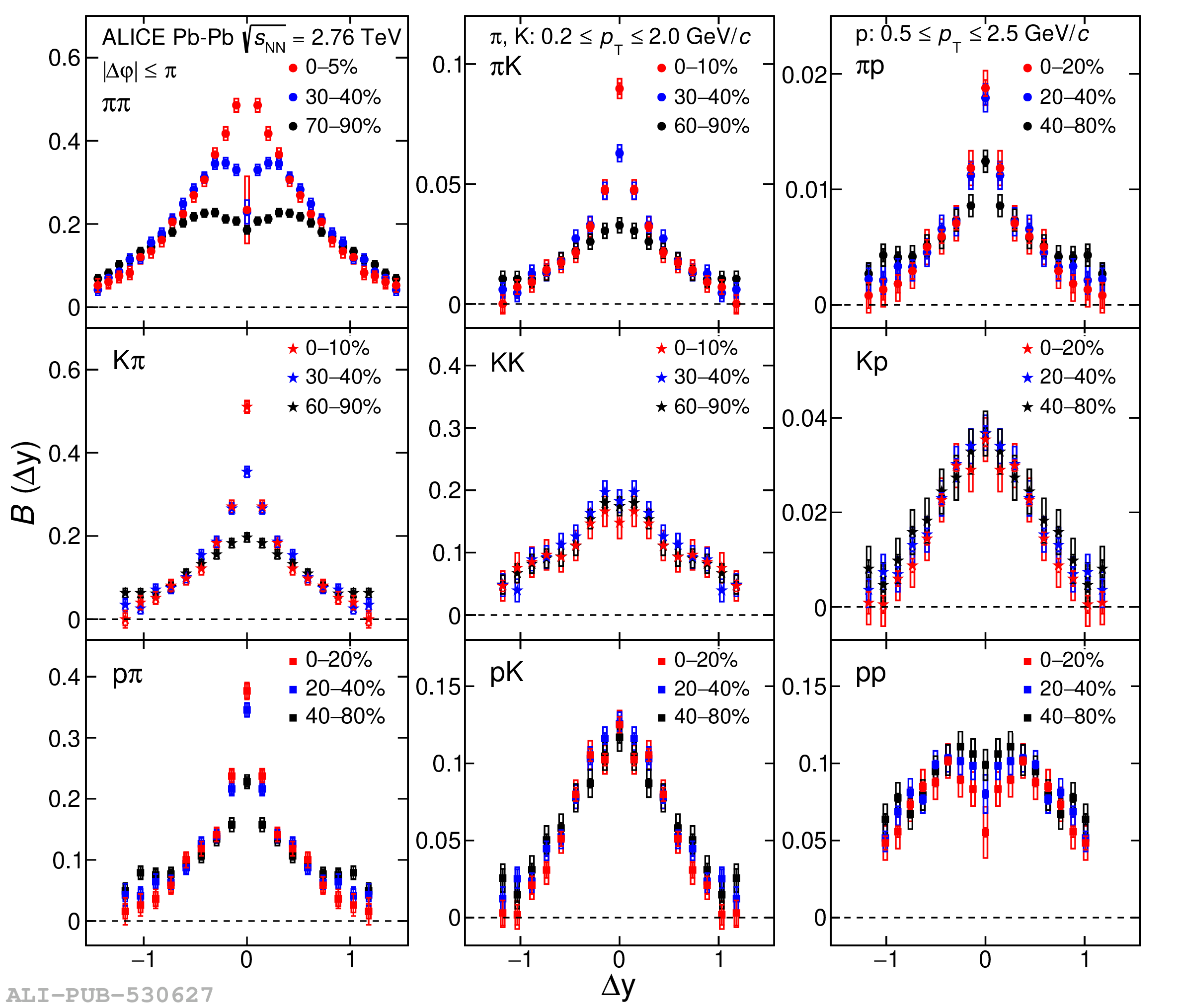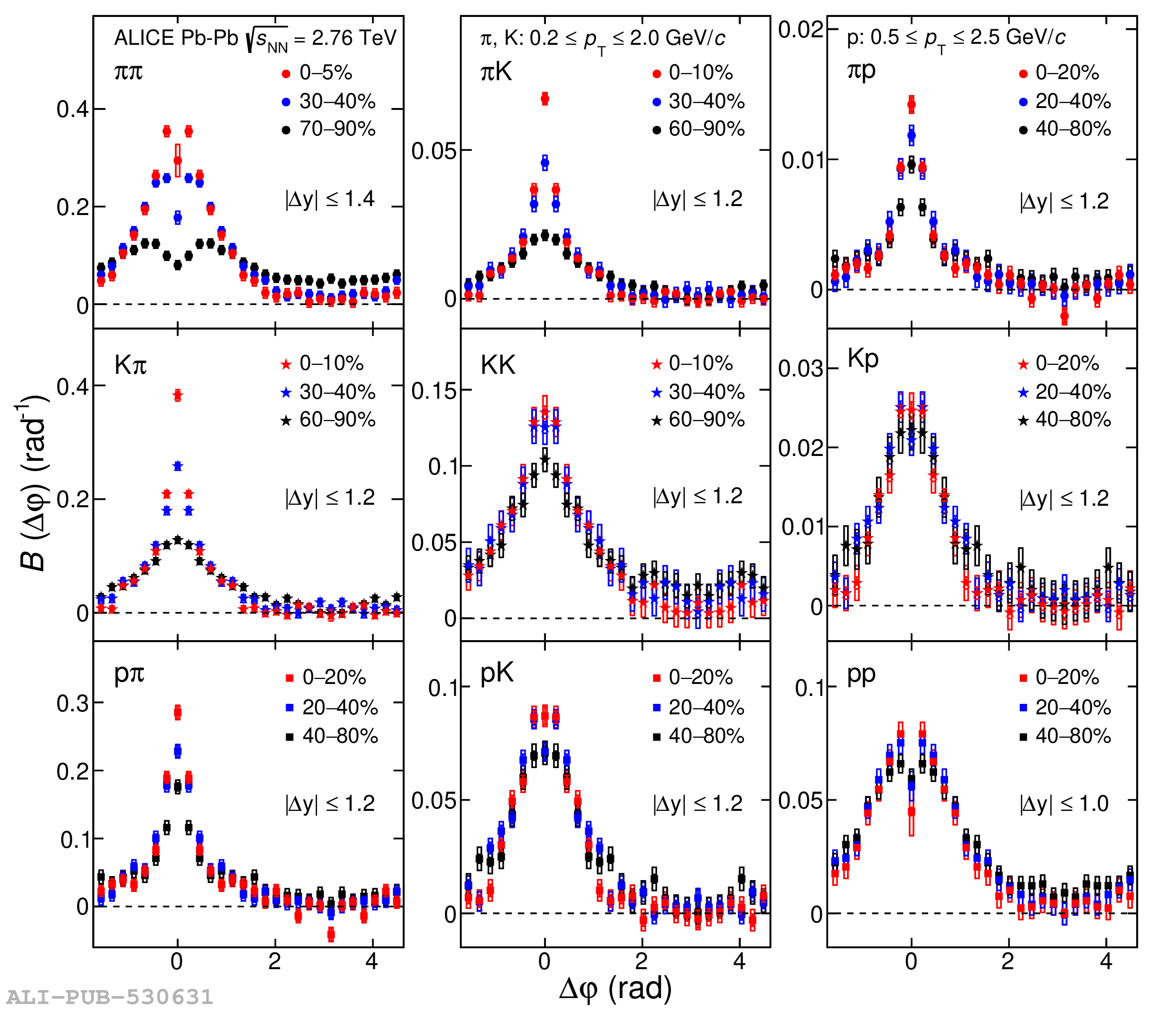First measurements of balance functions (BFs) of all combinations of identified charged hadron $(\pi,\rm K,\rm p)$ pairs in Pb$-$Pb collisions at $\sqrt{s_{\rm NN}} = 2.76$ TeV recorded by the ALICE detector are presented. The BF measurements are carried out as two-dimensional differential correlators versus the relative rapidity ($\Delta y$) and azimuthal angle ($\Delta\varphi$) of hadron pairs, and studied as a function of collision centrality. The $\Delta\varphi$ dependence of BFs is expected to be sensitive to the light quark diffusivity in the quark$-$gluon plasma. While the BF azimuthal widths of all pairs substantially decrease from peripheral to central collisions, the longitudinal widths exhibit mixed behaviors: BFs of $\pi\pi$ and cross-species pairs narrow significantly in more central collisions, whereas those of $\rm KK$ and $\rm pp$ are found to be independent of collision centrality. This dichotomy is qualitatively consistent with the presence of strong radial flow effects and the existence of two stages of quark production in relativistic heavy-ion collisions. Finally, the first measurements of the collision centrality evolution of BF integrals are presented, with the observation that charge balancing fractions are nearly independent of collision centrality in Pb$-$Pb collisions. Overall, the results presented provide new and challenging constraints for theoretical models of hadron production and transport in relativistic heavy-ion collisions.
Phys. Lett. B 833 (2022) 137338
HEP Data
e-Print: arXiv:2110.06566 | PDF | inSPIRE
CERN-EP-2021-199
Figure group




